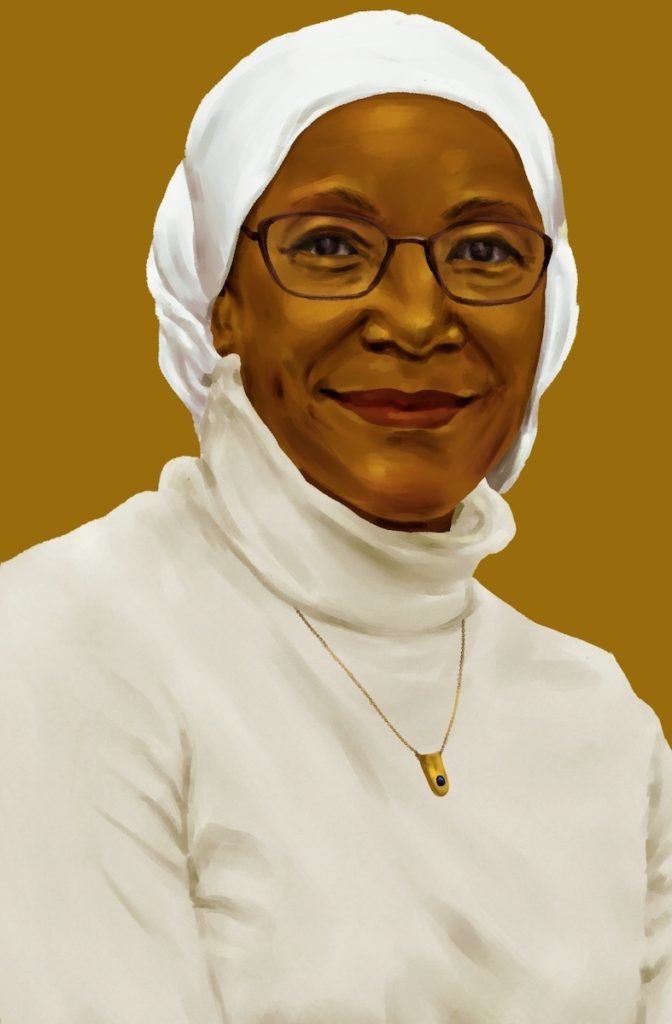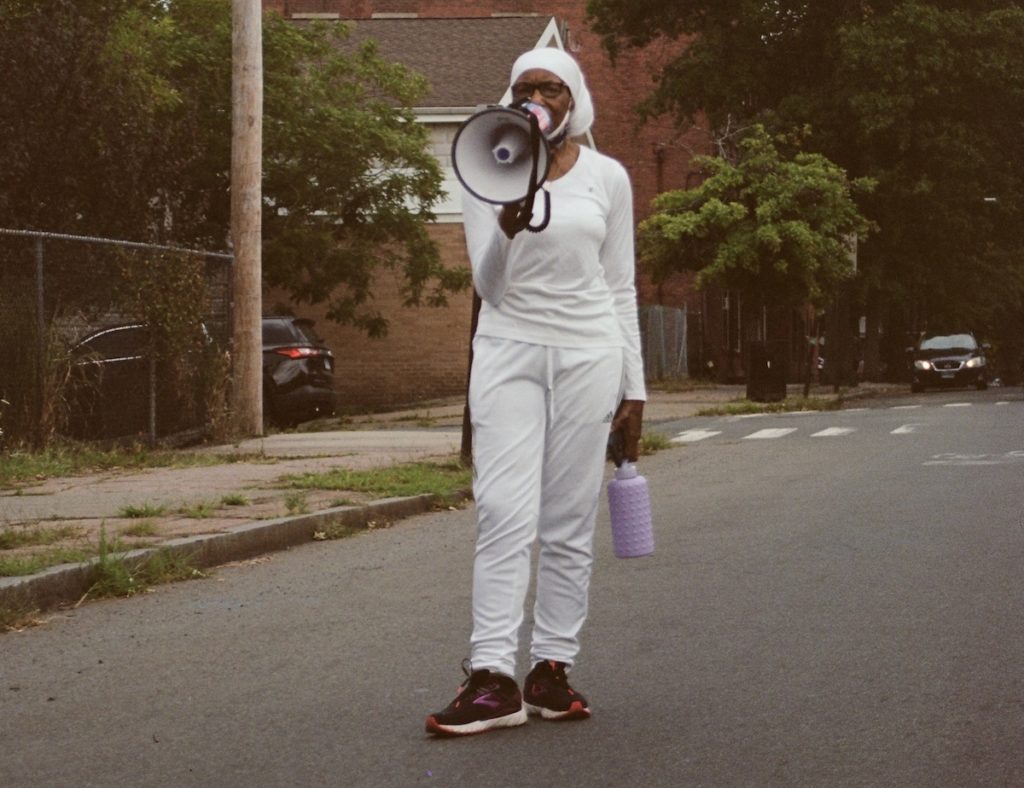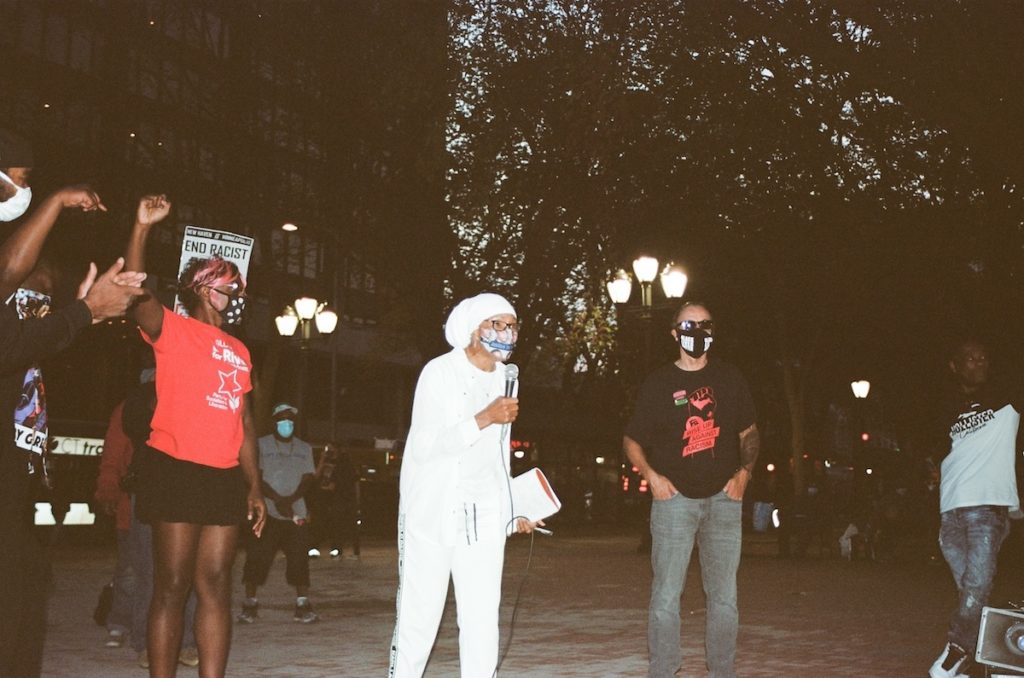For over two decades, Emma Jones has committed to three practices: every Monday she sits where her son Malik Jones was shot and killed by police. On the fourteenth of every month she engages in an action in support of a victim of police violence, and every year she holds an event on the anniversary of Malik’s murder.
Everything changed for the Jones family on April 14, 1997, when 21-year-old Malik Jones was brutally gunned down by East Haven, Conn., police officer Robert Flodquist. “I said very clearly when Malik was murdered, that but for racial profiling, Malik would be alive today,” Jones said in a conversation with Liberation News.
On that day, she made a vow to wear white for the rest of her life in silent protest for Malik and all other victims of police terror.
“I have a great history of understanding of police brutality long before I entered the arena to fight for justice for my son,” said Jones.

A revolutionary upbringing in Gee’s Bend, Ala.
Jones was born to Allie Pettway and John DeBaptiste in a remote community known as Gee’s Bend, where formerly enslaved Africans lived off the land in peace and unity.
Her father was known as the “Mayor of Gee’s Bend” after being informally appointed by the community, and was also the deacon of the local Pleasant Grove Baptist Church. Her mother was a Native woman and an artist who made quilts that pointed to the North Star, which were later showcased in museums across the country.
“My mother had us sleep on these quilts so that we would forever be connected to our ancestors growing up,” Jones remembered.
Jones knew of cooperative economics before the age of five years old. Her great uncle was one of the founders of the local co-op store, which was owned by and benefited the community.
Reporters from New York Times magazine investigated Gee’s Bend and published their findings, claiming that in the 100-year history they studied, they found zero evidence of a single crime being committed.
“We didn’t have any police officers,” Jones said. “None. Not a single one. No police officers. No police department. No interaction with them. We took care of each other.”
Learning and organizing with Dr. King, Kwame Ture and SNCC
The tight-knit African American community in Gee’s Bend attracted revolutionaries. Dr. Martin Luther King, Jr. held meetings at Pleasant Grove Baptist Church.
In the Sandy Hill area of Gee’s Bend, the Student Non-Violent Coordinating Committee held meetings in a house owned by Jones’s Uncle Roman, later known as The Freedom House.
Jones’s father would say about her, “Honey wants to be a revolutionary,” and a revolutionary she was.
From the age of 12 or 13, Jones remembers taking notes at SNCC meetings among members like Kwame Ture, and going door-to-door, handing out flyers, shouting, “Freedom!”
“Here come that revolutionary social worker,” people would say.

Even at this young age, being a revolutionary came with a cost. There was always a risk of violence.
“We were at The Freedom House and these were just college students. There was a demonstration over in Camden and some, what we called, ‘Deputized Posses,’ not police officers, white men on horses that rode by and shot up the house. One of the guys [from SNCC] grabbed me when the shooting started and put me in the bathtub,” Jones told Liberation News.
This was a risk she was willing to take. “When I was taken home, I didn’t say a word to my parents about the shooting.”
She recalled other memories of violence at the protests she attended, including the famous Selma-to-Montgomery March in 1965. “I got knocked over by a police officer on a horse. I remember looking up and seeing the belly of a horse as a kid. I literally had nightmares about it for years.”
Justice for Malik Jones!
“He had so much suave — the kind of guy you meet and just fall in love with him right away. He had the biggest smile,” Jones recalls fondly of her late son, Malik. “Articulate. Smooth. He was bright and he knew it, but never arrogant. Every single person who knew him fell in love with him.”
Even now, people stop Jones on the street to tell her stories about their memories of Malik, like when he got his license and gave two people a ride all the way from Connecticut to Florida, or how he would take the keys of his peers who had been drinking and return them safely back to their parents’ house, asking nothing in return.
The day that Malik was murdered in 1997, Emma Jones’s life was forever changed, and so were the lives of every person who had been affected by Malik’s kindness, his love, his joy and his grace.
The officer who killed Malik has never been charged or faced repercussions for taking Malik’s life.
Jones called the memories of the immediate aftermath “a living nightmare.” Molotov cocktails were lobbed at her home. An active bomb was left at Malik’s memorial site outside of the Jones’ house. At a protest following Malik’s murder, a pickup truck — adorned with police bumper stickers and a truck bed full of men wearing Ku Klux Klan garb — tried to drive through the crowd of protesters.

It is these memories and the facts that Jones sees as an indictment of a system propped up by white supremacy and police brutality working hand-in-hand.
“It continues despite some of the dents that we’ve made in the system. The system is so inherently wicked that minor changes — like changing a law, here and there — does not pierce the depth of the wickedness that we’ve had to endure for hundreds of years now. And so, in some ways, the system needs to be dismantled and overhauled.”
Seeing what she termed “custom, pattern, and practice” of police abuse of power, brutality, and misconduct, Jones created the M.A.L.I.K. Organization — a coalition of groups building a groundswell movement to fight police terror in Black and poor communities.
The organization has pushed for reforms such as the New Malik Rule, which calls for third party intervention and objectivity in investigations into police violence, tamper-proof recording devices in police cars that would automatically turn on when an officer enters their patrol car, and a Civilian Review Board to oversee police conduct. New Haven is in the process of establishing their CRB which will have subpoena power, and the authority to conduct its own investigations.
A mother’s fight continues
Jones is still pressing for answers. She hopes to bring the case to the United States Supreme Court and wants to see a National Commission formed to address police brutality.
She emphasizes as we must fight to minimize the power and potential for harm at the hands of the police, we must also reciprocally grow the power of community-based networks to support each other. “Those who have the power don’t have the interests of the masses at heart. Working-class people must be the ones to take care of each other,” she noted. “You can’t become liberated as long as you are dependent on other people for your survival.”
Jones wants the next generation of freedom fighters to know:
“There are incredible shoulders that they are standing on. And they are not standing on shoulders who had money and resources. The greatest resources we had were each other, and that was enough. The love and the respect and the faith that we had in what we were doing sustained us.”






